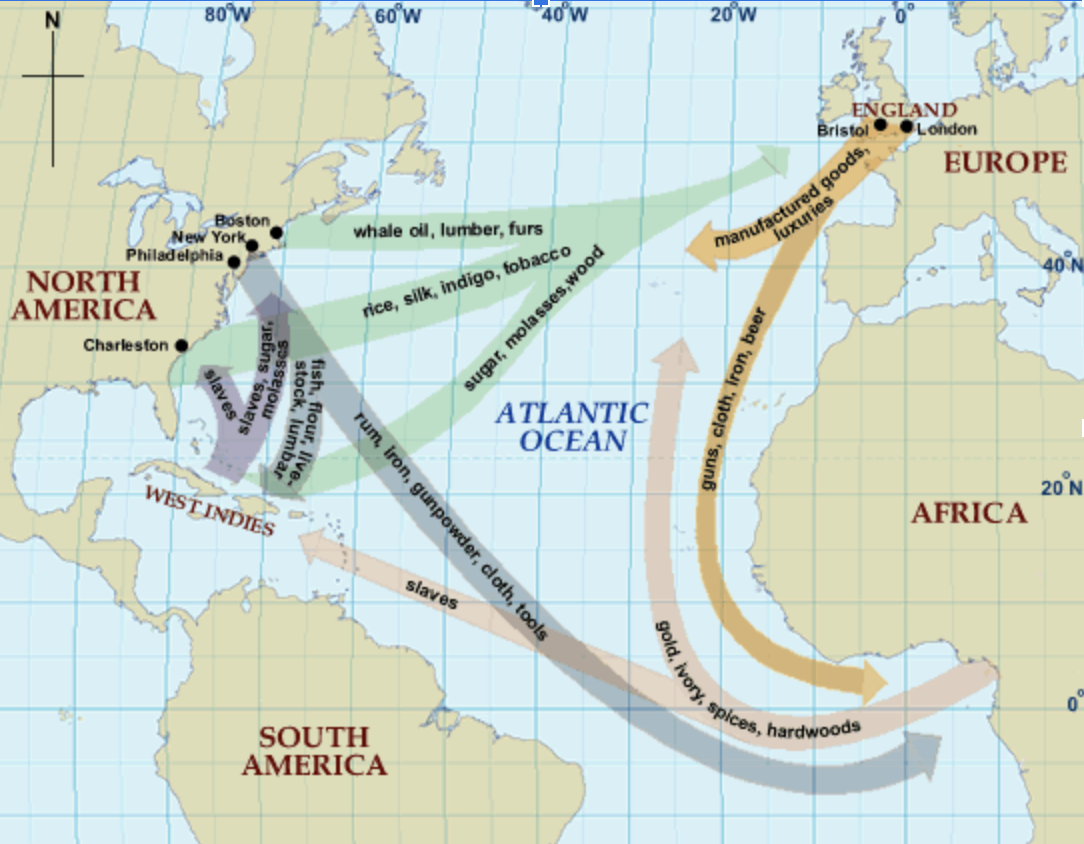4.0 Unit 4 Overview: Transoceanic Interconnections
4 min read•may 16, 2022
AP World History: Modern 🌍
577 resourcesSee Units
Unit 4 Overview: Transoceanic Interconnections
Welcome to Unit 4 in AP World History! This unit is titled "Transoceanic Interconnections." As the title entails, this unit will go deep into the connection between the Americas and Afro-Eurasia. While Europeans reached the Americas during the era of the Vikings, it wasn't until this time period that they established strong connections. We'll begin by understanding the motivations behind expansion with the 'three Gs': God, Gold, and Glory. Essentially, European travelers were motivated by opportunities to spread Christianity, gain wealth, and achieve personal glory. This unit centers around these motivations and how they established global expansion and subsequent connections. After studying on your own, invite some friends to a
study with me online session
to discuss the main points of the unit and review anything that you may be confused on. It is a great way to for everyone to feel supported while studying!Contextualizing the Unit
Before 1450, regional trade was all the rage as the Silk Roads, Indian Ocean network, and Trans-Saharan routes exploded with more merchants and goods flowing. By 1450, Europeans were set on finding a faster route to Asia. Relying on overland trade was too slow, and they were not able to bring all their many goods on a camel's back. Maritime trade would prove to be far more economically efficient, and the fastest way to Asia, to their knowledge at the time, was through the Mediterranean Sea. However, the Byzantines occupied and monopolized the area, and the Ottomans would soon follow. Therefore, Europeans traveled across the Atlantic Ocean to the Americas in hopes of finding a faster route.
However, looking back to units 1 and 2, remember that there WERE societies in North and South America by 1450. In fact, not only were these societies organized, but they were flourishing. The Aztecs and Incas had fully grown empires with social structures, economies, and infrastructure. However, when Europeans arrived, they began to colonize, which is arguably the most considerable impact of globalization. The growth of maritime empires marks a distinct shift in political growth compared to the post-classical era. Think back to 1200-1450; all of the empires we studied were based on land even though trade was becoming more oceanic. In this period, we'll see the growth of empires (mostly European colonial empires) and economic systems explicitly based around maritime trade. It all begins with the growth of globalized trade in the late 15th century following the Columbian Exchange. Unit 4 will focus on the impacts of globalized trade on Afro-Eurasia and the Americas positively and negatively.
The Big Idea Behind This Unit
Unit 4 can be summed up in one sentence: "Global connections changed everything." Everything is a broad term, but generally, no aspect of human life remained the same after the beginning of global connections. While existing trade routes like the Silk Roads continued, the focus primarily turned to routes around and through the Americas and towards Southeast Asia and India. This unit focuses on the impacts of this change along economic, social, political, environmental, and cultural lines. As the economy globalized, maritime empires turned to mercantilism, a protectionist trade ideology that encouraged colonization. This led to empires such as the Spanish, Dutch, Portuguese, French, and British Empires establishing colonies in the former Aztec and Incan empires.

The first interaction between Western Europeans and Native Americans is known as the Columbian Exchange. The Columbian Exchange was a transfer of goods, disease, and food from the Americas to Europe and from Europe to the Americas. The most significant impact of the Columbian Exchange on the Americas was the spread of disease. Because of the isolation of the Americas from Europe, disease, specifically smallpox, was rampant and killed upwards of 90% of the Native population. In Europe and Asia, foods such as the potato became revolutionary in fueling population growth.
Globalization also led to new social classes via the creation of new labor systems and race-based class systems. Labor systems such as chattel slavery and indentured servitude became commonplace as cheap labor was needed to build the colonies. These were coerced labor systems that abused humans through forced work. As people of different races came into contact, caste systems were created specifically around race, like the Sociedad de Castas. The new classes of peninsulares, creoles, mestizos, and mulattoes formed a system in which any racial "purity" to Spain gave power. At the top were Spaniards born in Spain (hence peninsulares, or "people of the [Iberian] peninsula"), and at the bottom were indigenous peoples and Africans. Europeans used these new racial systems (that they created) to justify their racist policies and violent takeovers of native lands.
There was, of course, resistance to European takeover. In this unit, you'll learn about various rebellions and resistances to European influence, especially those led by Native Americans and African slaves. Resistances like the Pueblo Revolt, Stono Rebellion, and Metacom's War (AKA King Philip's War) displayed the tensions between European colonizers and Native populations in the West and the East. Understanding the relationship between Europeans and Natives is crucial to this unit.
Browse Study Guides By Unit
🐎Unit 1 – The Global Tapestry, 1200-1450
🐫Unit 2 – Networks of Exchange, 1200-1450
🕌Unit 3 – Land-Based Empires, 1450-1750
🍕Unit 4 – Transoceanic Interactions, 1450-1750
✊🏽Unit 5 – Revolutions, 1750-1900
🚂Unit 6 – Consequences of Industrialization, 1750-1900
💣Unit 7 – Global Conflict, 1900-Present
🥶Unit 8 – Cold War & Decolonization, 1900-Present
✈️Unit 9 – Globalization, 1900-Present
✏️Frequently Asked Questions
🚀Thematic Guides
🗺Regional Guides
🤓Historical Thinking Skills
🧐 Multiple Choice Questions (MCQ)
📋Short Answer Questions (SAQ)
📝Long Essay Questions (LEQ)
📑Document Based Questions (DBQ)

Fiveable
Resources
© 2023 Fiveable Inc. All rights reserved.